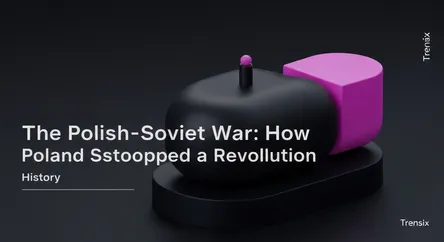History
The Polish-Soviet War: How Poland Stopped a Revolution

An overview of the 1919-1921 Polish-Soviet War, a pivotal conflict that halted the westward spread of communism and secured Poland's independence.
What is it?
The Polish-Soviet War was an armed conflict fought between the Second Polish Republic and Soviet Russia from February 1919 to March 1921. Emerging from the chaotic aftermath of World War I and the Russian Revolution, the war was a clash of two opposing ideologies. Poland, newly independent, sought to secure its eastern borders, while Soviet Russia aimed to spread the Bolshevik revolution westward into Europe, viewing Poland as a critical land bridge. The conflict saw dramatic shifts in momentum, with Polish forces initially advancing into Ukraine. A powerful Soviet counter-offensive then pushed the Poles back to their capital. The war's turning point was the decisive Battle of Warsaw in August 1920, known as the "Miracle on the Vistula," where Polish forces achieved an unexpected and crucial victory. The war concluded with the Peace of Riga in 1921, which established the Polish-Soviet border until 1939.
Why is it trending?
The war remains historically significant for halting the westward advance of the Bolshevik revolution. Many historians believe the Polish victory prevented a potential Soviet-backed communist uprising in a destabilized post-WWI Germany and other European nations. This defense of its sovereignty cemented Poland's national identity and preserved its independence for two decades. The Battle of Warsaw is often cited as one of the most important battles in world history, a pivotal moment that shaped the geopolitical landscape of interwar Europe by creating a buffer against Soviet expansionism.
How does it affect people?
The war had a profound impact on the populations of Eastern Europe. For the Polish people, the victory secured their newly regained national independence and forged a strong sense of national pride. The Peace of Riga established Poland's eastern frontiers, incorporating significant Ukrainian and Belarusian minority populations into the Polish state. For Ukrainians and Belarusians, the treaty marked the end of their immediate aspirations for independent nations, as their territories were divided between Poland and Soviet Russia. The conflict also resulted in hundreds of thousands of military and civilian casualties from combat, disease, and imprisonment, deeply affecting families across the region.